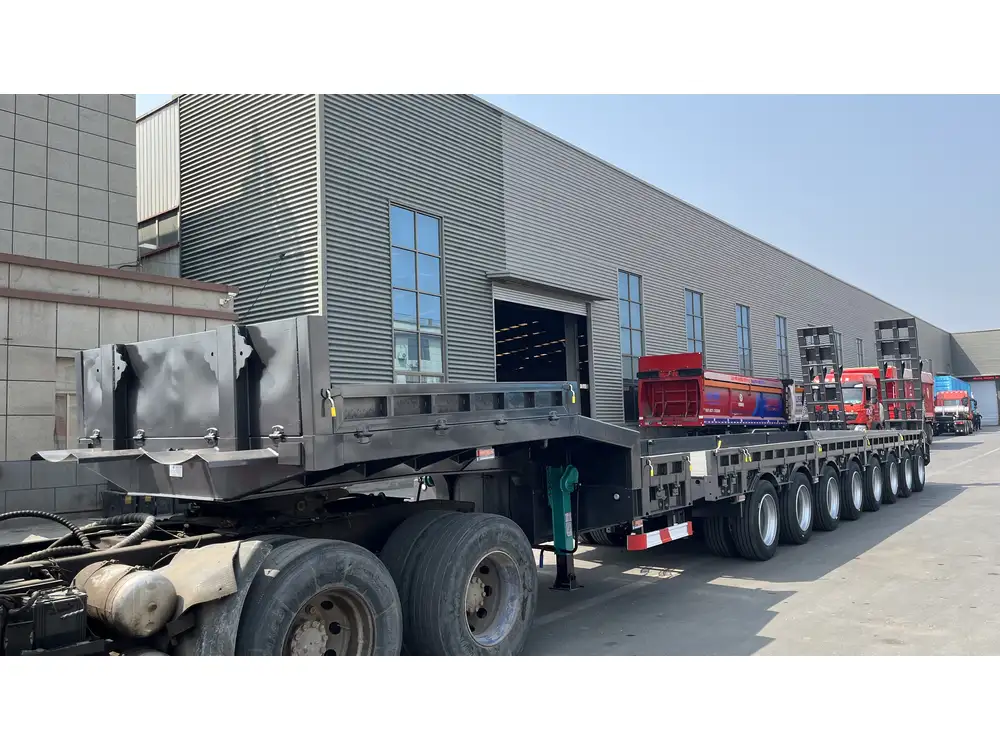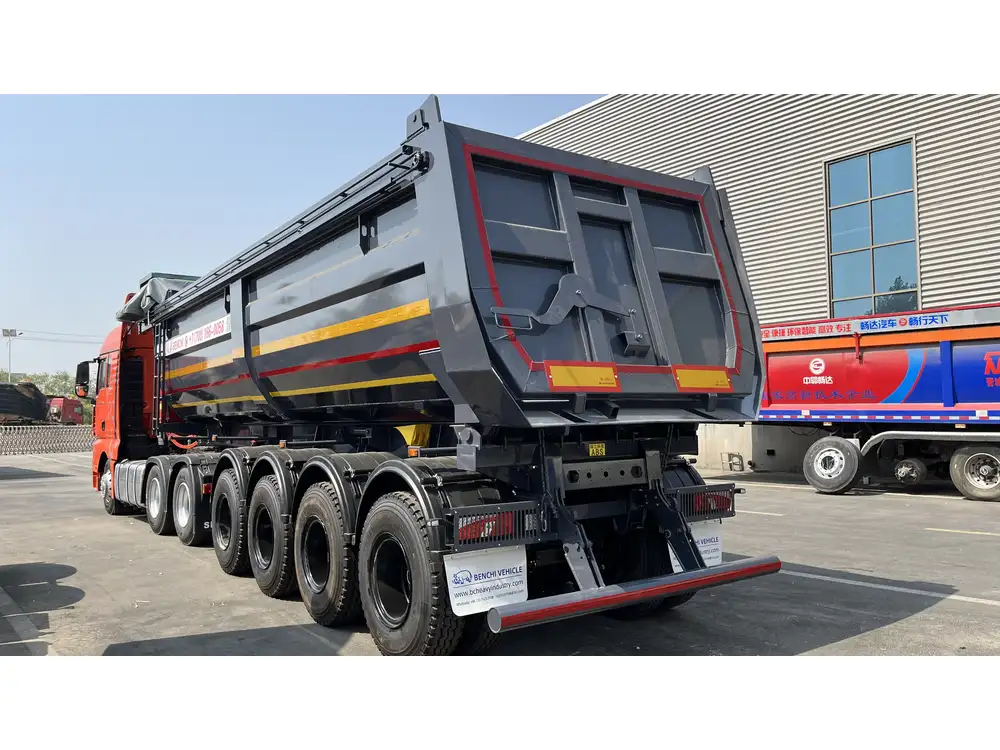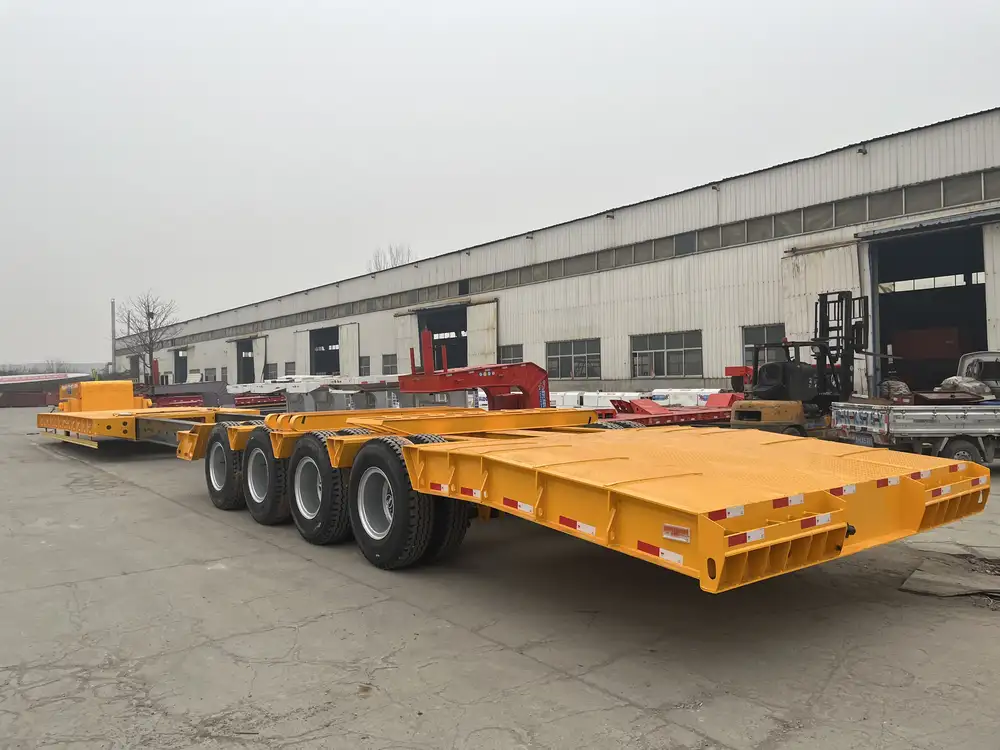Understanding the Weight Categories of Flatbed Trailers
When embarking on the journey of selecting or utilizing flatbed trailers, it is crucial to grasp the various weight categories that accompany them. The weight of a flatbed trailer significantly influences its transport capabilities, regulatory compliance, and overall performance. Understanding these classifications can lead to more informed decisions and optimized operations.
1. Lightweight Flatbed Trailers
These trailers are engineered for easy handling and enhanced fuel efficiency. Generally, lightweight models weigh anywhere from 2,000 to 4,000 pounds (910 to 1,814 kg). They are predominantly manufactured from aluminum or composite materials. Due to their lower weight, they are ideal for transporting lighter loads while maximizing payload capacity.

2. Standard Flatbed Trailers
Most commonly used in the industry, standard flatbed trailers typically fall within the weight range of 5,000 to 7,000 pounds (2,268 to 3,175 kg). Constructed from steel, these trailers offer a balance between durability and payload capacity, making them suitable for a multitude of general cargo, construction materials, and machinery.
3. Heavy-Duty Flatbed Trailers
Designed for robustness and resilience, heavy-duty flatbed trailers can weigh between 10,000 and 20,000 pounds (4,536 to 9,072 kg) or more, depending on the configuration and materials used. These trailers are predominantly made from reinforced steel and are engineered to carry exceptionally heavy and oversized loads, making them indispensable in industries such as construction, mining, and logistics.
Factors Influencing Flatbed Trailer Weight
Flatbed trailer weight is not determined solely by the type or model; several key factors play a pivotal role in influencing overall weight.

1. Materials Used
- Steel: While it’s the most traditional material, steel trailers are heavier and robust, ideal for rough use.
- Aluminum: Lightweight but still durable, aluminum trailers have become popular due to lower operational costs.
- Composites: An evolving option, composite materials provide an increasingly popular alternative, balancing weight and tensile strength.
2. Design and Configuration
The design—whether it’s a single or tandem axle configuration—affects weight bearing significantly. A tandem axle distributes weight more evenly and can carry heavier loads as opposed to a single axle, thus changing the overall empty weight.
3. Accessories and Features
Add-ons like ramps, toolboxes, and storage compartments add extra weight. Buyers must evaluate how essential these features are based on the expected use.

4. Regulation Compliance
Understanding the legal weight limits set by the Department of Transportation (DOT) can help in choosing the right flatbed trailer. Exceeding these limits can lead to hefty fines and safety issues.
5. Intended Use
The operational purpose also influences the choice and hence the weight of flatbed trailers. A flatbed utilized for transporting heavy construction machinery will often have a different weight specification compared to a flatbed used for hauling lighter cargo like lumber or pallets.
Compliance with Regulations
Navigating the weight regulations can be daunting. The legal limits for gross vehicle weight vary between states, necessitating thorough research and understanding. When discussing flatbed trailers, one must consider:
| Regulatory Aspect | Description |
|---|---|
| Federal Weight Limits | Typically set at 80,000 pounds (36,287 kg) for tractor-trailer combinations. |
| State-Specific Limits | Certain states have unique regulations; check local DOT sites. |
| Permit Requirements | Oversized or overweight loads may require special permits. |

Cost Implications of Trailer Weight
The weight of a flatbed trailer is intrinsically linked to its cost-effectiveness and operational expenditures. A heavier trailer may have a lower base price, but when evaluating total cost ownership, one must consider fuel efficiency, maintenance, and potential fines for exceeding weight limits.
1. Fuel Efficiency
Heavier trailers tend to consume more fuel. A lightweight flatbed generally yields better fuel efficiency, translating to lower operational costs over time.
2. Replacement and Repair
Heavier materials, such as steel, can deteriorate faster due to increased stress during transportation of heavy loads. Thus, maintenance costs must enter the equation when considering which flatbed trailer to purchase.

3. Insurance Costs
Insurance premiums can fluctuate based on the trailer’s weight class. Heavier trailers, while capable of hauling more, may attract higher insurance costs due to the increased risk associated with carrying oversized loads.
Selecting the Right Flatbed Trailer
What does it take to select a flatbed trailer that meets your commercial needs? Here are some vital considerations to make before finalizing your choice.
1. Load Capacity and Weight Distribution
Understanding how much weight the trailer can actually handle is critical. Researching load capacity ratings ensures compliance with regulatory standards and safety measures.

2. Intended Cargo Type
Different loads may require specific trailer configurations; for example, specialized trailers for hauling equipment may have lower sides for ease of access.
3. Terrain and Route
The geography of the routes you plan to traverse can impact the decision. Lightweight trailers are often advantageous on rugged terrains, providing better fuel efficiency and easier handling.
4. Manufacturer Reputation
Partnering with reputable manufacturers known for building durable and reliable trailers can pay dividends in the long run. Look for companies that offer excellent warranty and after-sales service, information on parts availability, and customer testimonials.
| Consideration Factors | Description |
|---|---|
| Weight Capacity | Understand the maximum allowable loads. |
| Material Choices | Consider durability vs. weight when selecting. |
| Resale Value | Heavier trailers could depreciate faster. |
| Financing Options | Explore various financing methods offered by sellers. |

Investigating Flatbed Trailer Dimensions
Understanding the weight of a flatbed trailer involves knowing its dimensions as well. Flatbed trailers commonly come in several standard sizes:
| Size | Dimensions (L x W) | Typical Weight |
|---|---|---|
| Small Flatbed | 14-18 feet x 82-102 inches | 4,000-7,000 lbs (1,814 kg) |
| Medium Flatbed | 20-35 feet x 102 inches | 7,000-10,000 lbs (4,536 kg) |
| Large Flatbed | 40+ feet x 102 inches | 10,000-20,000 lbs (9,072 kg) |
Conclusion: Making an Informed Decision
Assessing the question of how much does a flatbed trailer weigh involves a multifaceted understanding of trailer classes, various contributing factors, compliance regulations, as well as the economic implications tied to weight.
The journey towards choosing the right flatbed trailer doesn’t merely revolve around capsulated weight figures. Rather, it encompasses a broader evaluation that considers intended use, regulatory compliance, and the economics of operation. Engaging thoughtfully with these aspects will yield benefits that extend beyond simple mathematical calculations.
Consequently, whether you find yourself knee-deep in logistics for heavy-duty machinery or ferrying construction supplies, analyzing and understanding trailer weight is indispensable for achieving operational efficiency and compliance.
By consciously matching the trailer weight with your specific needs and operational parameters, you can enhance productivity while managing your costs effectively. Thus, your decision-making process in selecting a flatbed trailer can not only fulfill current requirements but also adapt to future demands in transportation dynamics.



